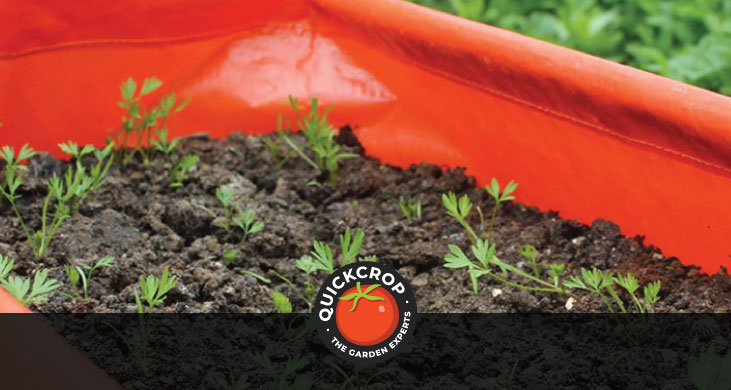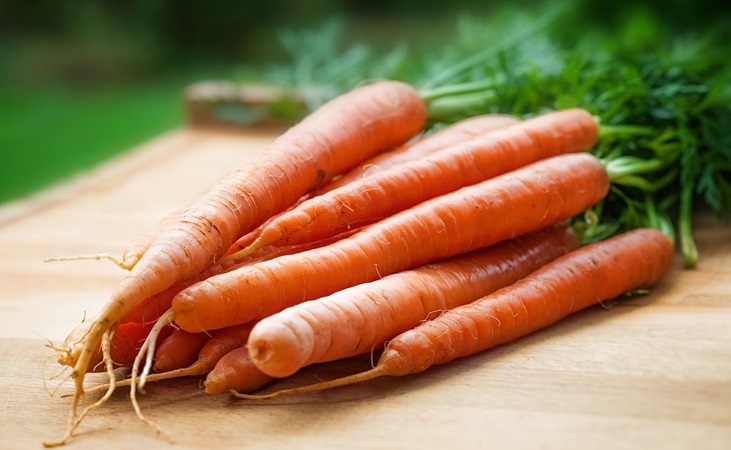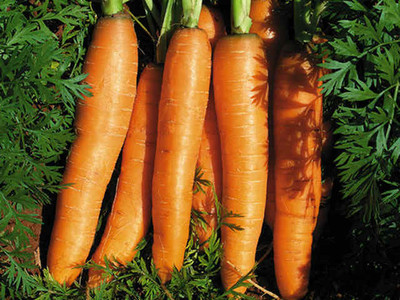How to Grow Carrots In Containers

Growing carrots in containers can be more successful than you would expect, and it is a great way to begin growing your own food at home. Patio planters or containers make for a great way of 'testing the waters' for the beginner gardener, as well as offering some valuable growing space on balconies, rooftop gardens, and other restricted urban or suburban spaces.
While a lot of containers may not suit carrots as well as planting them in the ground or in raised beds, there are many things you can do to increase your chances of success - and an easy crop of your own fresh carrots.

Carrot Patio Planter - 2 Pack
View Product
Choosing the Right Container
First of all choose a deep container - like a fabric carrot planter bag - to facilitate the carrot's long roots. As the roots need plenty of space to grow, a planter of about 1.5ft high is perfect. It doesn't matter so much what type of planter it is, just as long as there are plenty of drainage holes.
At 12 inches high, the Haxnicks carrot patio planter is suitable for most root vegetables. Made from polyethylene with rigid tubes for stability, it can be folded away for storage when not in use. It is reusable, so just wash properly before use to remove bacteria.

1.8m Vegtrug Vegetable Trough Planter
View ProductThe VegTrug trough planter is a great option for carrots and other root crops, due to its V-shaped design which provides deeper soil along the centre. Vegtrug planters provide a container garden at an accessible height, and you can even optimise the microclimate with covers that have been specially designed to fit the Vegtrug frame. The options include PVC, polyethylene and micromesh, as well as a cold frame that can be fixed to the top of your planter.
Choose the Right Variety of Carrot!
Not all carrots have to be the "Bugs Bunny" type. I learned this after growing plenty of misshapen, weird-looking, stunted roots. A nice round variety will get along much better in growbags. Varieties like 'Early Nantes' or '
Chantenay Red Cored' are ideal: they have the classic tapered shape but are shorter and wider, and taste as good as any carrot you will grow.

Carrot Early Nantes
View Product
Choose a good soil or compost for your container
A loose, light soil or compost is always best for carrot root growth. Loosen the soil and make sure there are no stones or hard bits. If the carrot root meets any obstruction it will grow misshapen and hard.
Fill the container to within 1 inch of the top. There are actually some great benefits here compared to growing in the ground: a) there are no soil pest problems, b) less weeding involved, and c) you can optimise your soil easier in a container.

Envirogrind Compost & Soil Improver - 50L bags
View ProductFertiliser can be added on a weekly basis, but is purely optional. The carrot growbags mentioned above require 40 litres of soil/compost to fill. We recommend a bag of 40 Litre Living Green Organic Compost - or for larger beds a mix of multipurpose compost and envirogrind.
Sowing Your Seeds
- Make 3 inch planting holes about 2.5-3 inches apart
- Put 3 carrot seeds in each one
- Fill over with your soil mix or compost, then thoroughly water.
- Keep the soil or compost wet going forward to ensure that the roots get enough water to maximise growth. The drainage holes will expel any excess.
Carrots are best planted in March in partial sun.

Looking After Carrots in a Planter
Once your seedlings have reached about 1 inch high (they should be growing in groups of 3), trim 2 out of 3 down to near the soil level, leaving only one per planting group standing.
After a couple of days if the stems start to lean, mound up a little bit of soil to straighten each stem back up and ensure the root is completely submerged. If the orange root is exposed to sunlight it will turn green and taste bitter.
Your delicious container-grown carrots should be ready after 2.5 months. They can be harvested a week or two beforehand if you prefer them sweeter.



